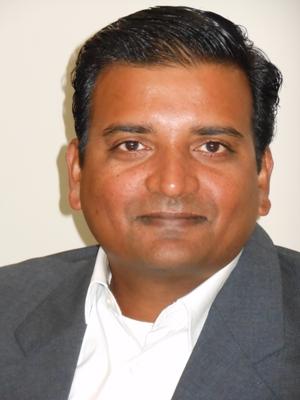
Prasanna Parthasarathy reveals how CareFusion cures Asian 'misdiagnosis'
He also reveals growth projections in the region.
The recently unveiled healthcare reforms prove that Singapore is a growing market for foreign and local medical tourism.
In its report, DBS noted that an estimated cS$980m were spent in Singapore by foreigners on medical goods and services in 2011.
Adding to the growing list of various medical technolgies offered in Singapore is CareFusion, a medical technology firm that partner with its customers to help them improve medication management, lower costs in procedural areas, and advance the care of ventilated patients and turn the endless amount of data generated in healthcare into actionable information.
Five years ago, CareFusion entered the Singapore market and so far, the region has been one of the fastest in adopting its leading medical technology solutions.
Singapore Business Review caught up with Prasanna Parthasarathy, Vice President, Dispensing International, CareFusion Corporation, to know more about their technology and the company's future plans in Asia.
SBR: What is the cost of mismanaged or misdiagnosis in Asia?
This is difficult to quantify – due to the lack of latest comprehensive research and analysis available in the variety of markets. For developing markets in Asia certainly an area of huge improvement.
SBR: How does this compare to your U.S and European markets?
The World Health Organization (WHO) estimates more than 1 in 10 patients are harmed while receiving hospital care in developed countries. The Institute of Medicine estimates that more than 100,000 people a year die from a medication error or healthcare-acquired infection.
That is more than three times as many that die from automobile accidents in the U.S. each year.
When you look at the financial cost of medication errors, more than 1.5 million patients annually are harmed at an estimated cost of $3.5 billion in the U.S. alone.
Healthcare-acquired infections affect 1.7 million patients annually in the U.S. resulting in 271 fatalities per day. That’s one every 5.5 minutes. A study that analyzed 1.69 million admissions from 77 hospitals concluded that infections reduced overall net inpatient margins by $286 million, or $5,018 for each patient with an HAI.
SBR: Can you share at least three tangible benefits of adoption of your technology?
Decreased Medication Errors, Reduced and/or prevented healthcare-acquired infections, and Increased efficiency/Decreased cost.
SBR: In terms of adoption of medical technology, where does Asia stand? Do they see medical technology as a priority?
Asia varies widely depending on the specific country/market. For example, in China, their cities will have the latest and greatest med tech devices, but in rural China, they are just now finding ways to provide basic care.
However, it is important to say that Asian markets are rapidly increasing their focus to improve the quality in patient centric care and therefore are quick to adapt leading edge medical technology.
SBR: What has been CareFusion's growth in the Asian market?
We do not release financials at the regional level, but we have increased our presence in key markets like China, India and emerging ASEAN markets.
SBR: CareFusion has a diverse range of solutions – is there a specific area that is of bigger priority in Asia, for example, is it Infection Prevention or Medication Management?
Our primary focus is helping to improve patient safety. We don’t believe that hospitals need to choose between Medication Management or Infection Prevention. They can do both, because when they implement technology to improve in these areas, they save money.
There may be upfront investments, but in the long run, avoiding errors avoids huge costs to a hospital. So we focus on patient safety, not an either or.
SBR: How do CareFusion products benefit the end user i.e. the hospital patient?
Our technologies provide different end patient benefits depending on the product. For our Pyxis and Rowa dispensing products, these help ensure the five rights of medication safety.
That means they help ensure the right patient gets the right medication in the right dose at the right time through the right route of administration.
SBR: What is your growth forecast in the region, apart from Singapore, which markets are key for your penetration into Asia?
Key markets are India, China and emerging ASEAN markets. To the growth factor: measurement of growth is not measured by the numbers of units we sell but the satisfaction levels of our customers and improved efficiency and patient safety in the area.
























 Advertise
Advertise









